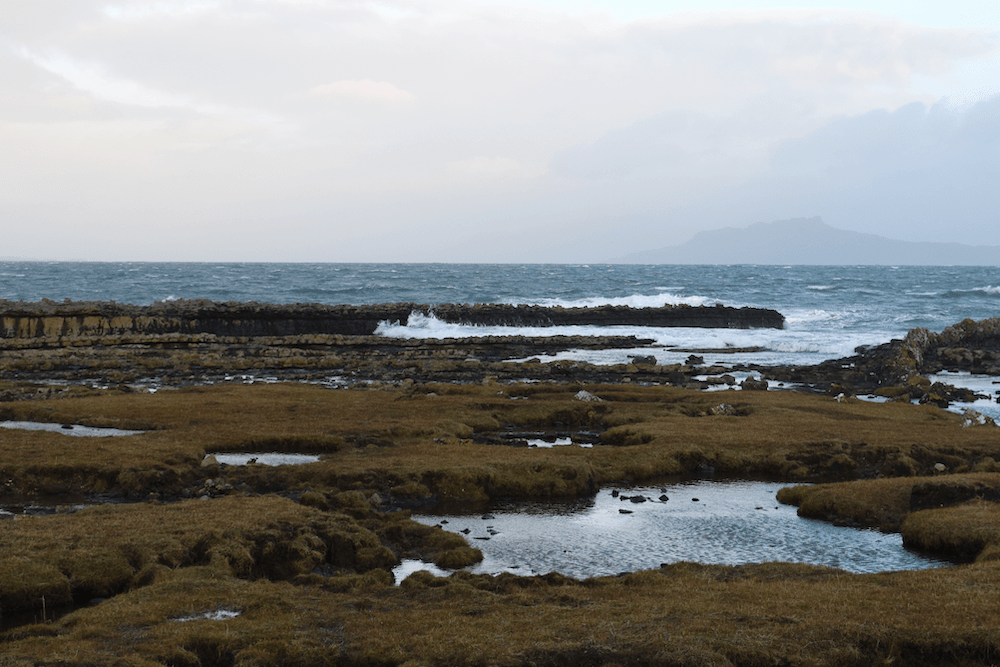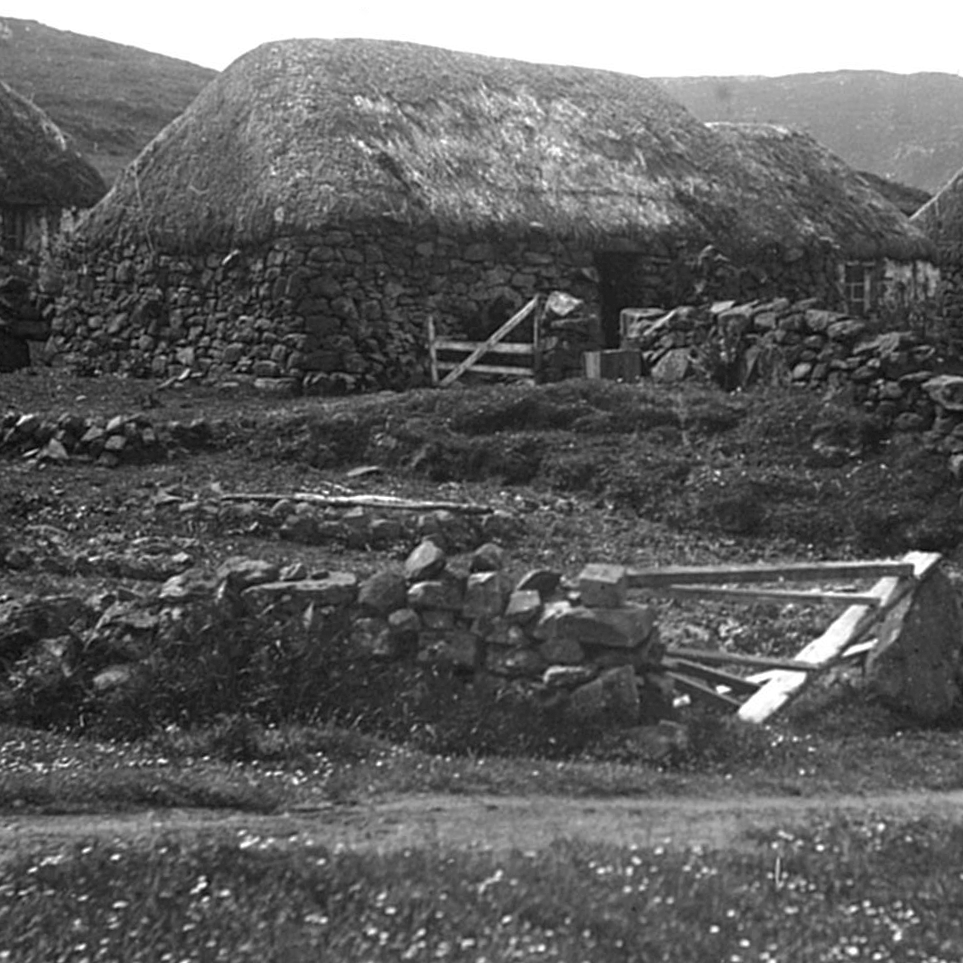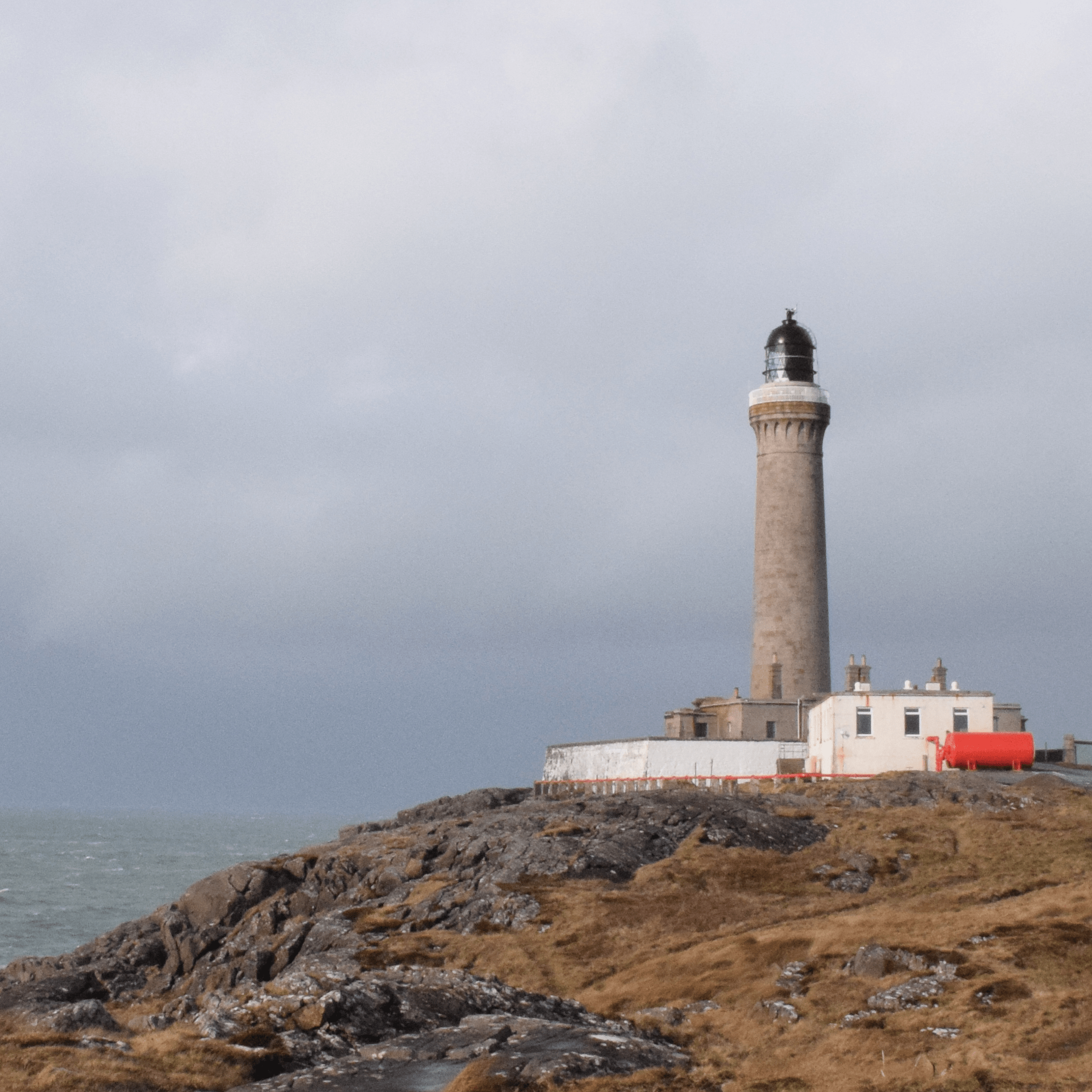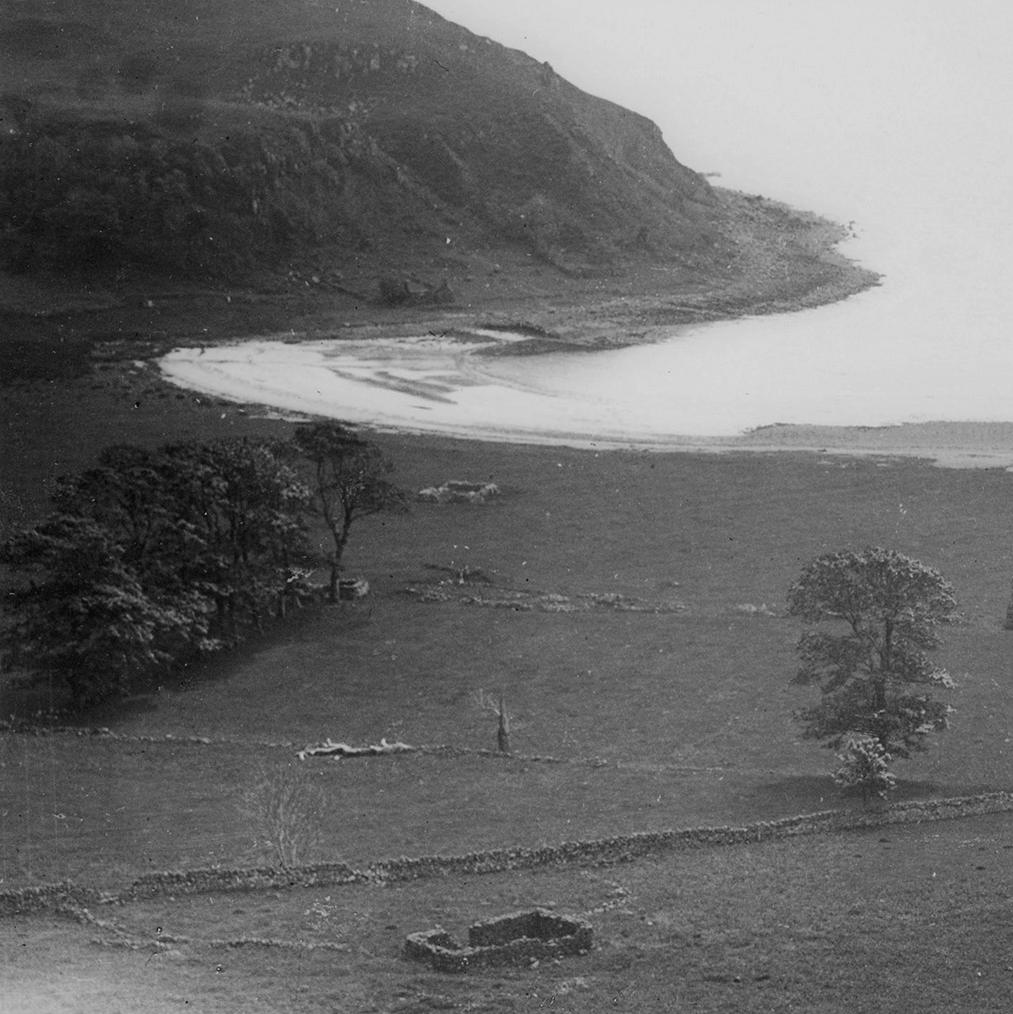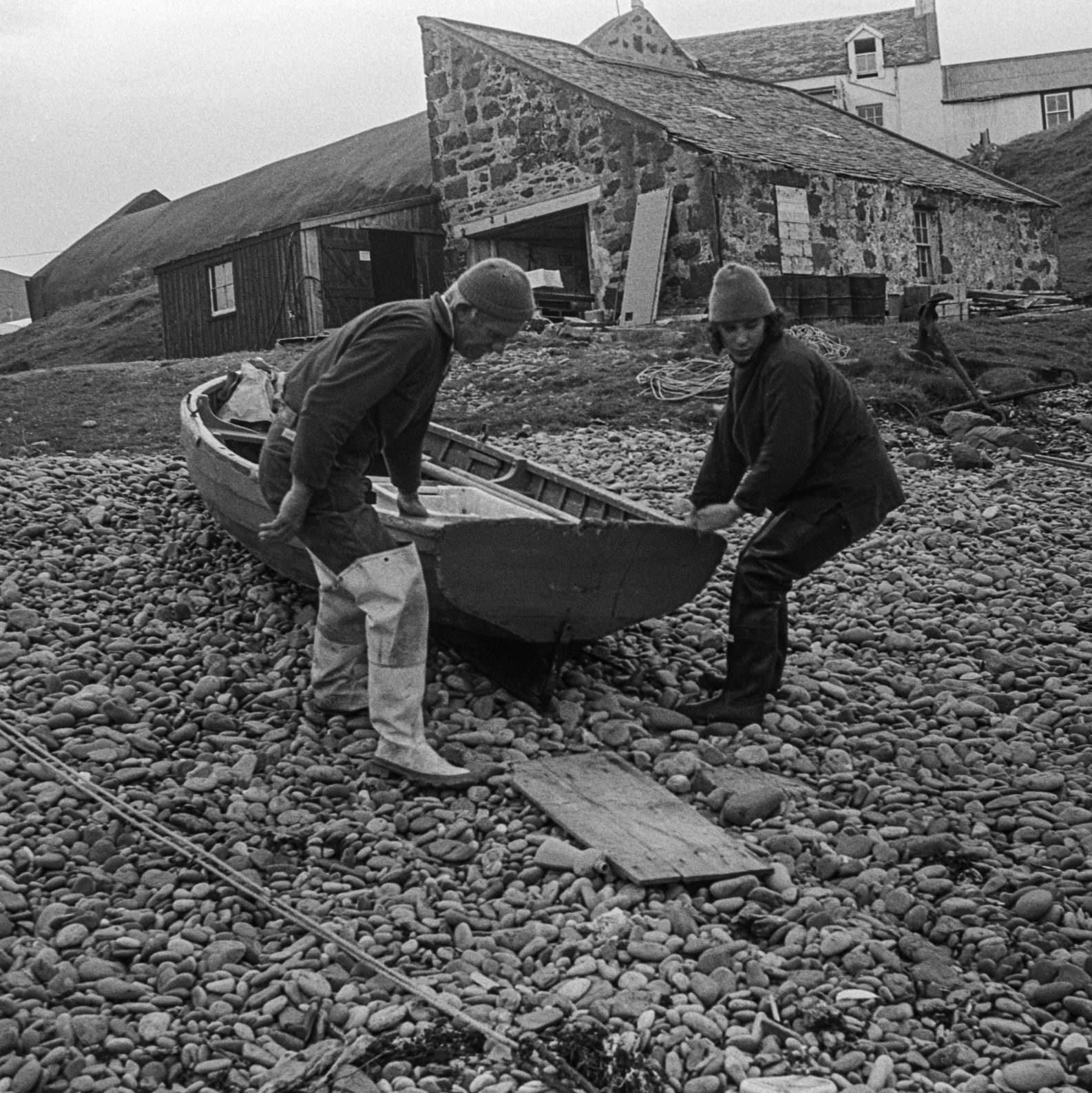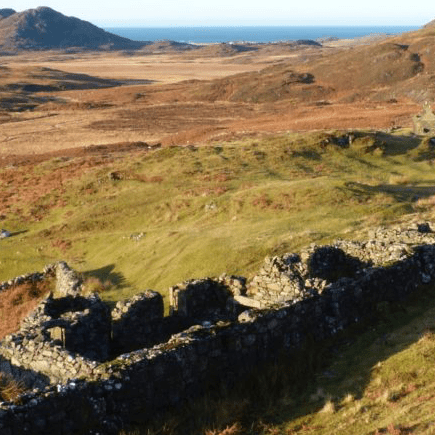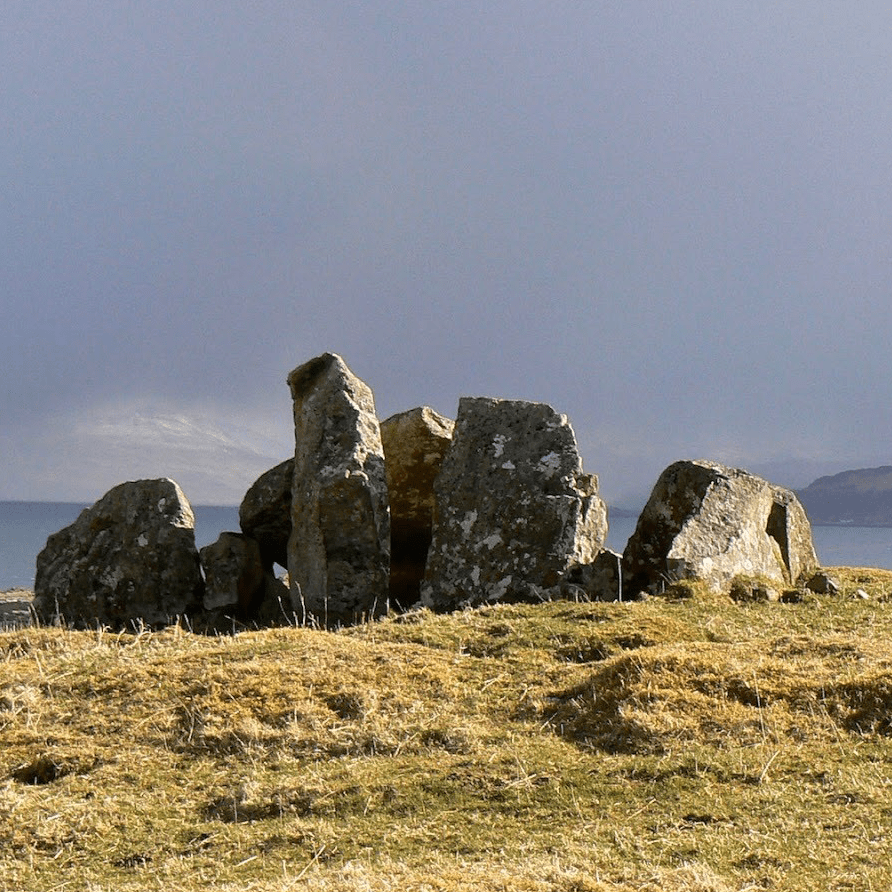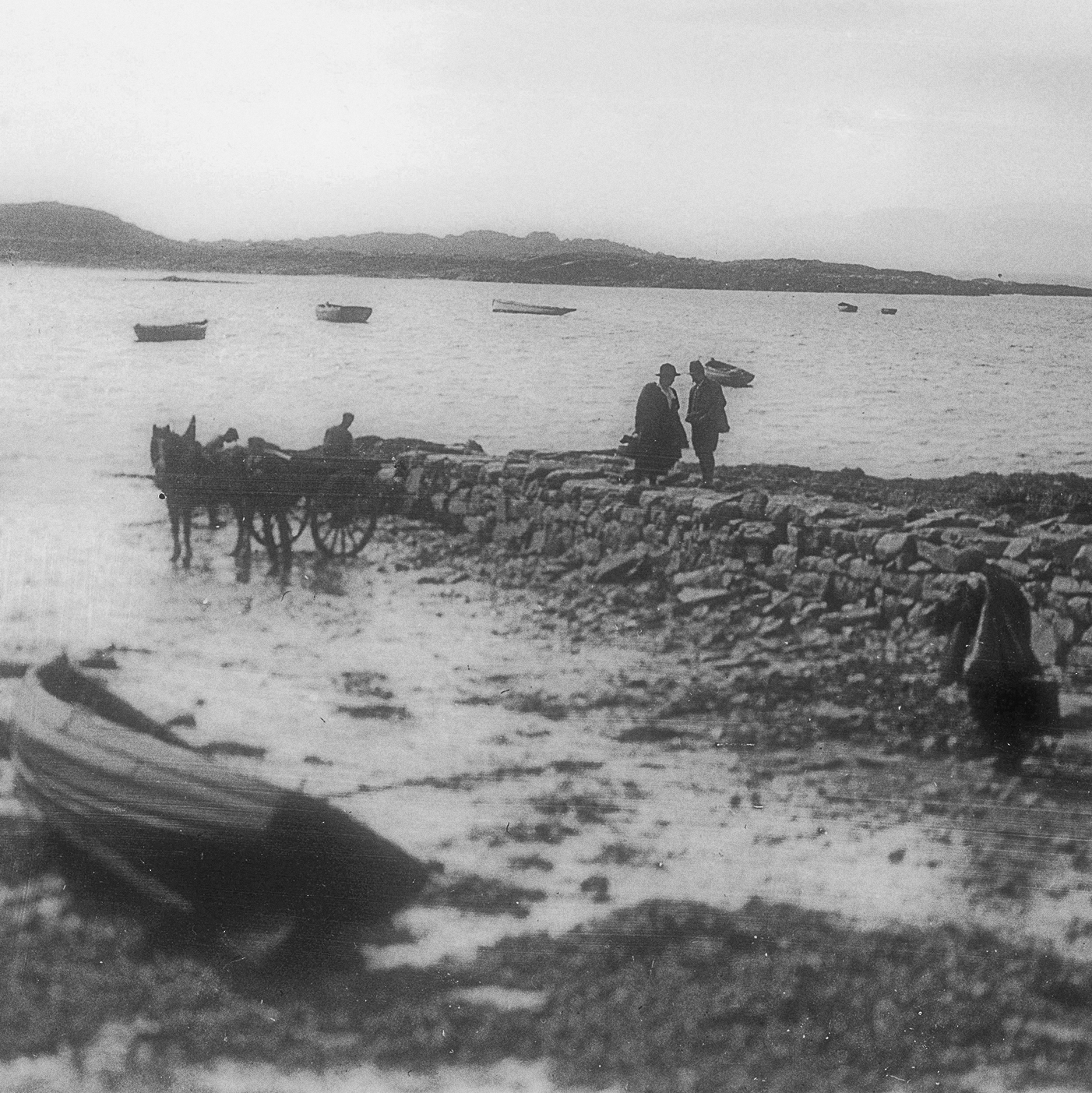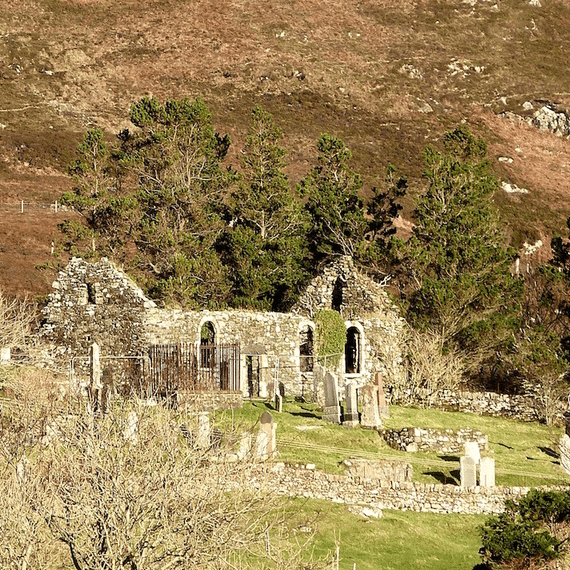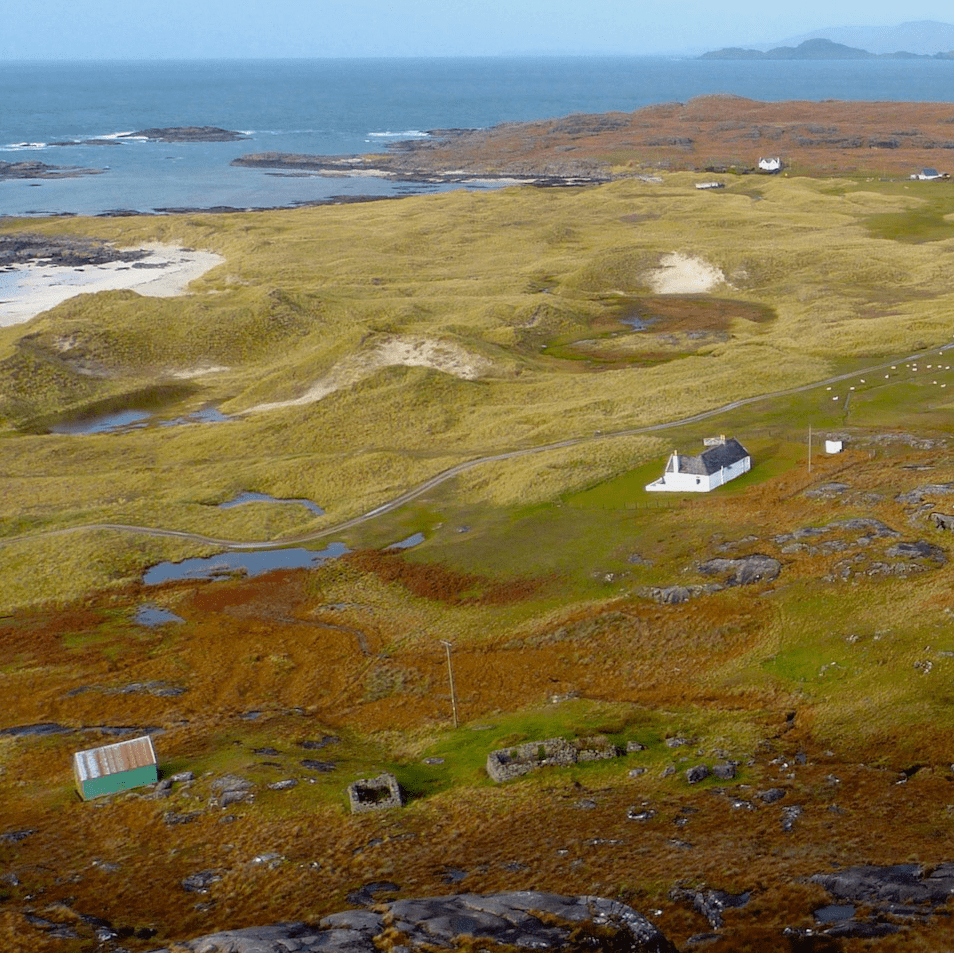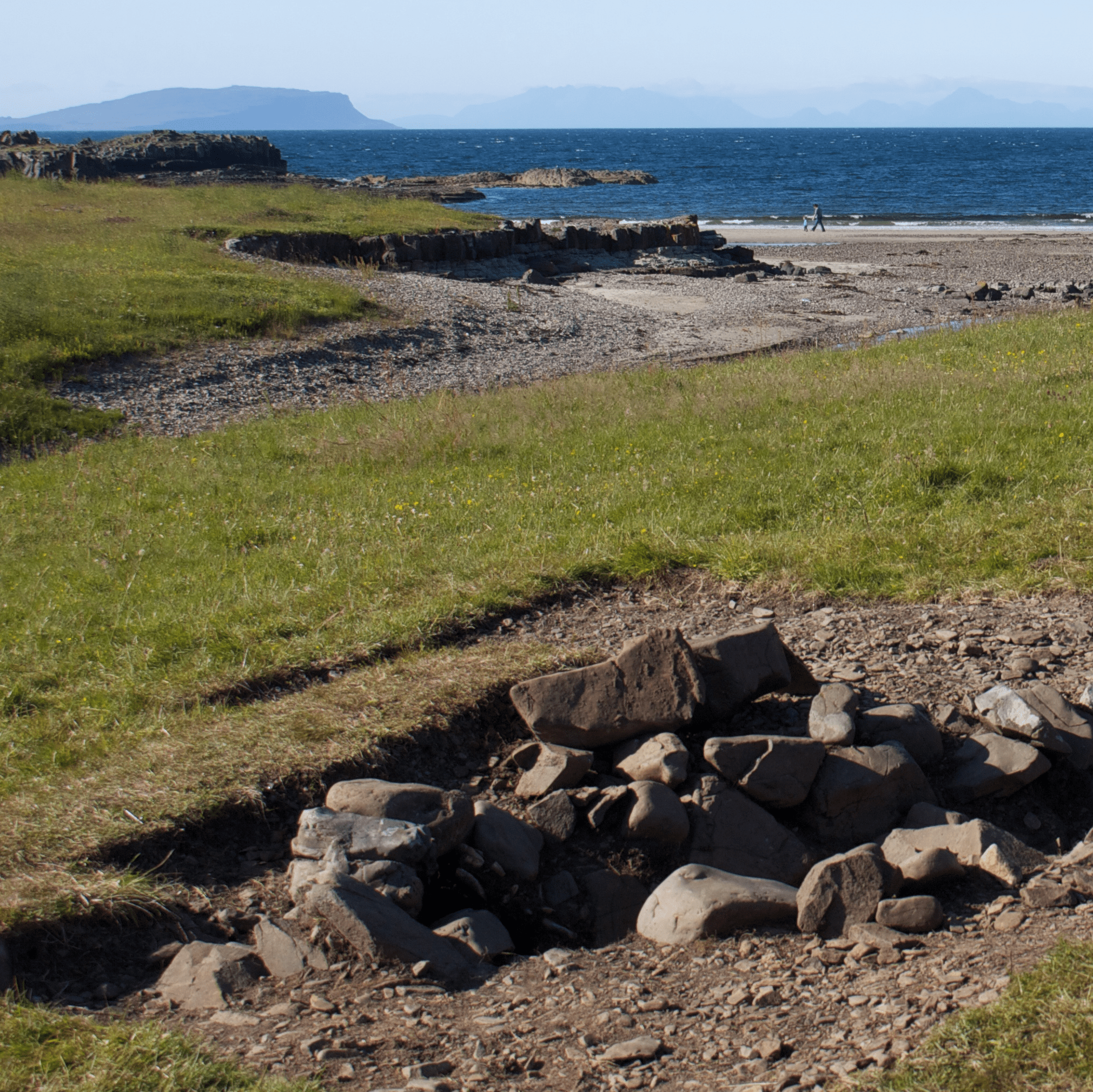Kilchoan Old Parish Church
Brief History
Kilchoan Old Parish Church is located in the eastern end of The Old Cemetery, which contains over a hundred marked graves, the oldest - The MacIain grave slabs - dating back to the 14th or 15th century. The graveyard was still in use in the 20th century.
Click here to find out more about Kilchoan Old Parish Church
Oldest Grave Slabs
On the two oldest grave slabs in the cemetery, you can see intricate carvings in the Iona School style. They both show the Birlinn symbol of Clan MacIain and a claymore - claidheamh mòr “great sword”.
Main Road
The main road in Kilchoan used to pass by the church. (source: John Cowleyʼs map, 1734).
Look out for...
A grave where only nettles and weeds grow, which belongs to the notorious factor John McColl, who was buried here in 1847. Folklore suggests that his cruelty in evicting people from settlements resulted in him being cursed so that nothing else would grow on his grave.
